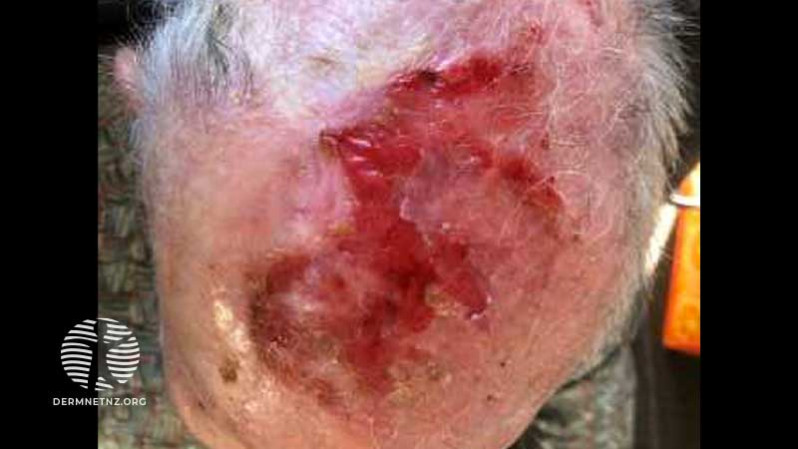Main menu
Common skin conditions

NEWS
Join DermNet PRO
Read more
Quick links
60-year-old with multiple crusted plaques on the scalp
Last reviewed: January 2024
Author: Stanley Leong, Dermatology and Paediatric Registrar, November 2023
Reviewing dermatologist: Dr Ian Coulson (2024)
Edited by the DermNet content department

Background
This 60-year-old man has previously had multiple squamous cell carcinomas (SCCs) of the scalp removed. He also had a history of infiltrative SCC requiring local radiotherapy to his scalp 8 years ago.
He recently developed multiple plaques with pus under the crusts on his vertex. The crusts were removed and revealed underlying superficial erosions. The ulcers had not healed after months.
What is the most likely diagnosis?
The most likely diagnosis is erosive pustular dermatosis of the scalp.
It is more common in elderly men with a sun-damaged bald scalp, a history of actinic keratoses, and/or a history of SCCs or basal cell carcinomas (BCCs) of the scalp.
It is usually diagnosed by its characteristic clinical appearance.
What are the clinical features?
Initially, a small area of the scalp becomes red, crusted, and irritated. Crusting and superficial pustulation usually overlies a moist, eroded surface.
Extensive disease can result in scarring and extensive alopecia.
SCC can develop in the scars.
What are the treatment options for this condition?
Potent or ultrapotent topical steroids will suppress the inflammatory changes. Gradual reduction in the potency of topical steroid used over a 6-month period may result in cure. Failure to respond to this should prompt biopsy to exclude malignancy.
There is some evidence for using oral zinc sulfate, topical calcipotriol, and topical dapsone. Oral retinoids may also be tried.
Maintenance therapy with sun protection and intermittent moderate-potency topical steroids can provide long-term relief.
